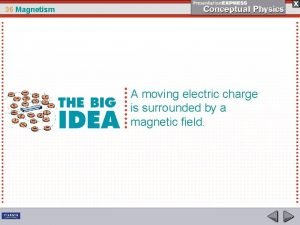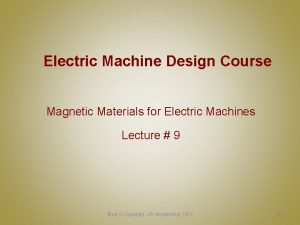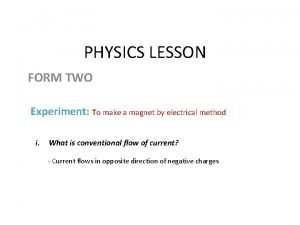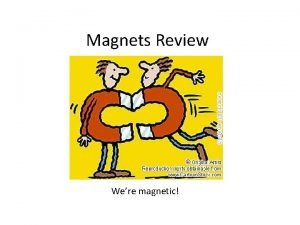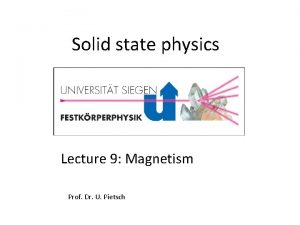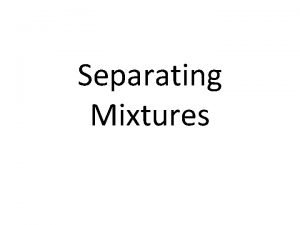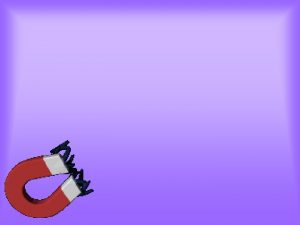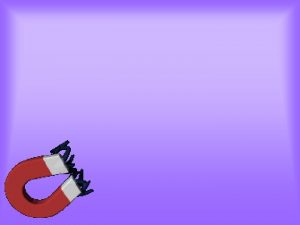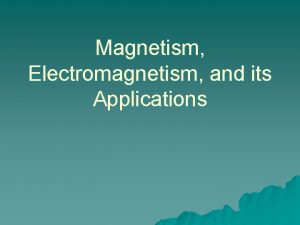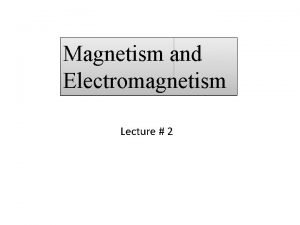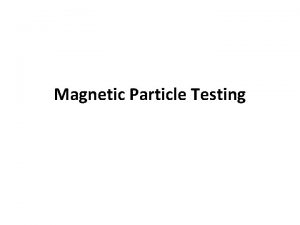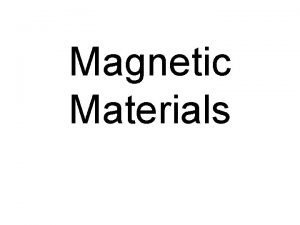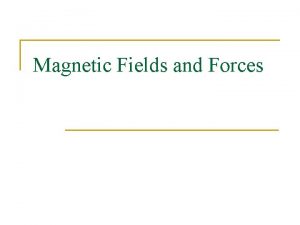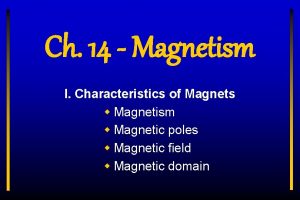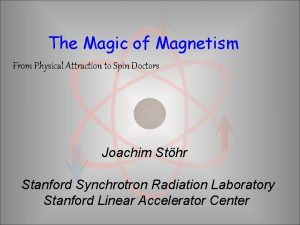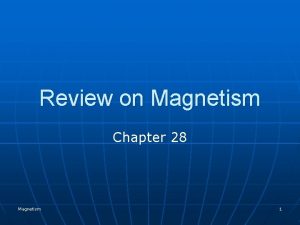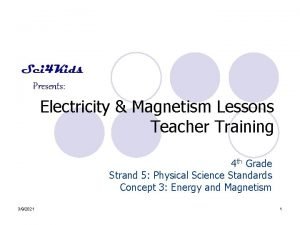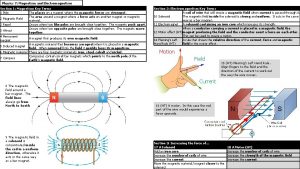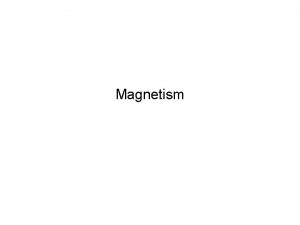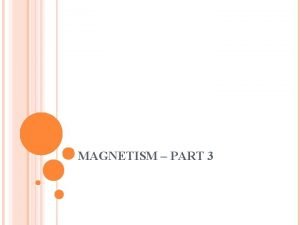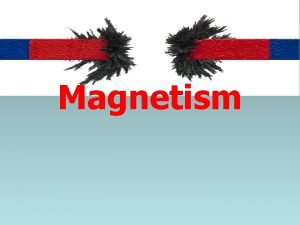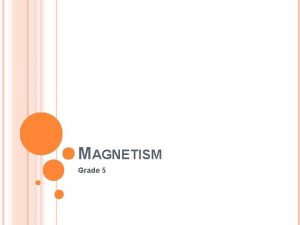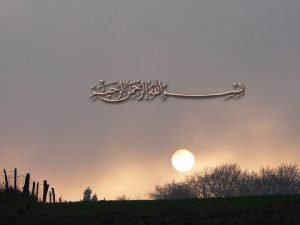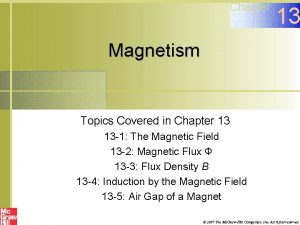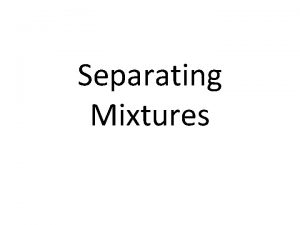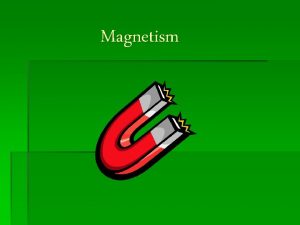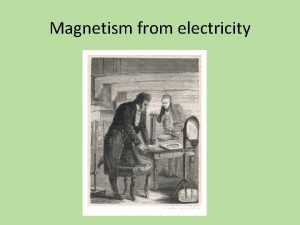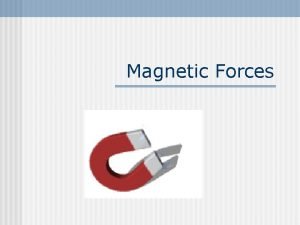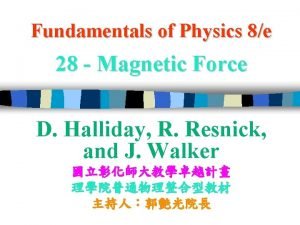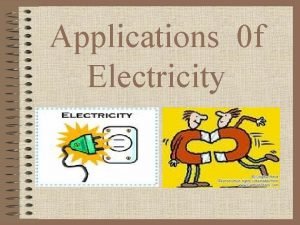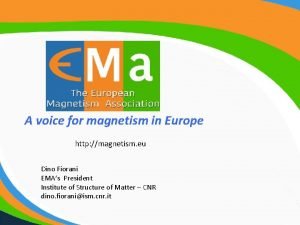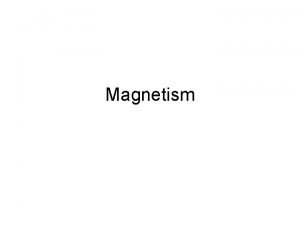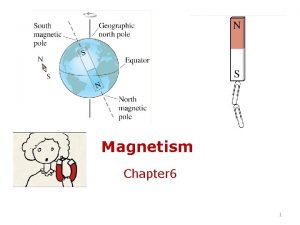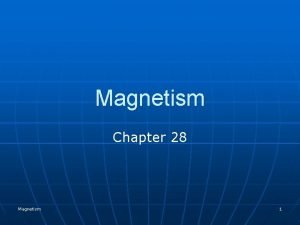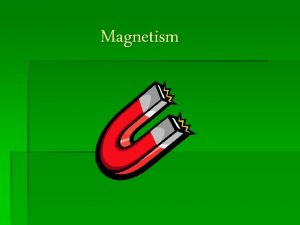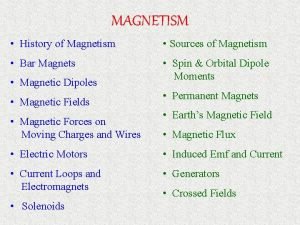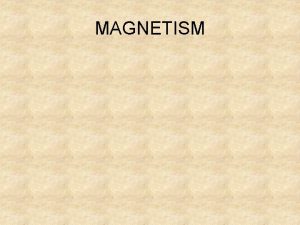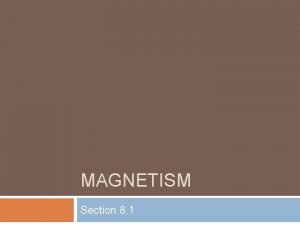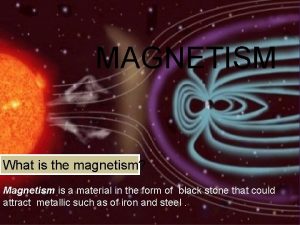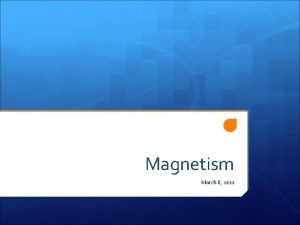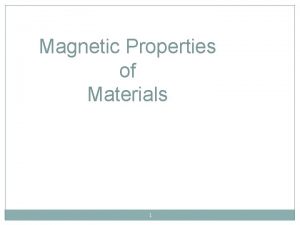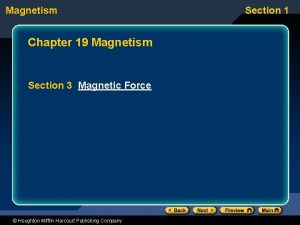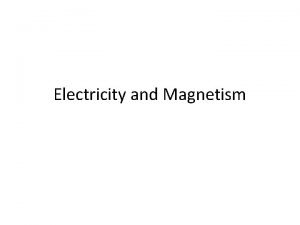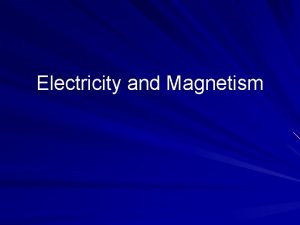Magnetism Chapter 21 Magnetic Materials n n n























































- Slides: 55

Magnetism Chapter 21

Magnetic Materials n n n Natural magnets known since ancient times, called lodestones, made of magnetite, an iron ore All magnetic effects caused by moving electrical charges Ferromagnetic materials highly attracted to magnets: Fe, steel, Co, Ni, Nd, Pa

Ferromagnetism n n n Due to spinning electrons in atoms In most materials, magnetic effects cancel -- paired electrons with opposite spin Fe, Ni, Co, Gd, Dy, Nd have unpaired electrons in outer valence shells with same spin causing atoms to become small magnets (Fe has 4)

Domain Theory n n Domains are microscopic groups of atoms with same magnetic orientation When placed in strong external mag. field, domains aligned with ext. field grow in size Other domains turn towards external field If domains remain aligned after external field removed, permanent magnet results

Loss of Magnetism n n Domain alignment can be destroyed by heat or excessive vibration Curie Point: Temperature at which magnetic domains disappear and material becomes paramagnetic

Weak Magnetic Effects: Paramagnetism n n Paramagnetism: some materials have slight natural magnetic moment and are weakly attracted by strong external magnetic field (Al, Pt, O 2) Effects of orbiting and spinning electrons don’t cancel out and atoms are slightly magnetic

Weak Magnetic Effects: Diamagnetism n n Diamagnetism: In a strong external magnetic field, some materials experience induced magnetic moment (become slightly magnetic) and are weakly repelled (Zn, Bi, Au, Hg, Na. Cl) Strong ext. field opposes motion of electrons causing slight repulsive force

Magnetic Poles Most magnets have 2 poles: North (north seeking) and South (south seeking) n Named because of effect due to earth’s magnetic field n Opposite poles attract; like poles repel n

Magnetic Poles Since magnetic N poles point north, earth’s magnetic pole in the north is actually a S pole n Some magnets have more than one N or S pole n Some circular magnets have no exposed poles n

Magnetic Poles If magnet is cut, each piece has N and S pole n Magnetic unit pole (single N or S pole) never been found but is used in theory n

Magnetic Forces n n Magnetic forces of attraction and repulsion obey inverse square law similar to those of gravitation and electrostatics Force is directly proportional to product of strength of poles & inversely prop. to square of distance between them

Magnetic Fields n n n Represented like electrical field: lines of flux showing magnitude and direction of force on N unit pole Arrows point from N to S, lines continue through magnet Magnetic flux (FB): number of lines passing through a surface; unit is weber (Wb)

Magnetic Field n n n Flux Density: number of lines of flux per unit area, often called magnetic field strength; symbol B, a vector; unit: tesla (T) B = F/A ; 1 T = 1 Wb/m 2 Magnetic field can be mapped by using tiny magnets (compasses) or iron filings


Bar Magnetic Field

Earth’s Magnetic Field n n n Cause is convection currents of ions in molten core Magnetic axis is not in line with rotational axis Difference between true north and magnetic north is called declination

Earth’s Magnetic field

Earth’s Magnetic Field n n Magnetic field has shifted over historical time Geologic record shows field has reversed polarity many times, even disappeared for long periods

North Magnetic Pole

North Magnetic Pole

The Magnetosphere n n n Sun emits many charged particles in solar wind, most are deflected by earth’s magnetic field Magnetosphere: area where charged particles are affected - about 57, 000 km up on side facing sun; greatly elongated away from sun Many particles are concentrated in 2 regions called Van Allen radiation belts

The Magnetosphere

Electric Current and Magnetism n n 1820: Oersted showed current in wire will deflect compass needle Magnetic field around current carrying wire is in concentric circles Direction of B found using right hand rule: point right thumb in direction of current; curled fingers point in direction of field B = 2 k. I/r ; k = 10 -7 N/A 2

Right-hand rule

Magnetic Field of a Wire

Force on Moving Charges n n n Force on a charge Q, moving at speed v, in magnetic field of flux density B; F = Qv. B Force is always perpendicular to velocity Can’t change speed, only direction of velocity - creates centripetal acceleration and circular motion

Right-Hand Rule for Force


Parallel Conductors n n n Current in parallel wires create forces on wires Currents in same direction - attractive force; opposite direction – repel F = (2 kl. I 1 I 2)/d : k = 10 -7 N/A 2; l = length of wires; I 1 I 2=currents in wires; d = distance between wires

Parallel Currents Anti-parallel Currents Attracting Force Repelling Force

Loops and Solenoids n n n If straight conductor is bent into loop, magnetic field is concentrated inside loop creating magnetic dipole (with exposed N and S pole) Use right hand rule to find direction of B through loop: fingers point in direction of current, thumb points in direction of magnetic field through loop To increase mag. strength, add more loops

Magnetic Field of Loop

Loops and Solenoids n n n A long coil makes solenoid with strong magnetic field inside coils If iron core is added to solenoid, electromagnet results whose strength depends on number of ampere-turns If long solenoid is bent into circle (donut shape) result is called toroid

Magnetic Field of a Solenoid

Analog Meters n n Use a pointer to show readings, not digital readout Simplest meter is a galvanometer, which detects current with coil of wire on soft iron core between poles of permanent magnets Current in coil creates electromagnet whose polarity depends on direction of current Electromagnet tries to align itself with permanent magnets, held back by springs

Galvanometer

Analog Meters n n Needle attached to coil shows deflection along the scale Very sensitive to small currents, but not calibrated to give actual reading Voltmeter is galvanometer adapted with high resistance in series with coil Can be calibrated to measure voltage

Analog Meters n n Ammeter is a galvanometer adapted for higher currents by placing low resistance shunt in parallel with meter coil Calibrate meter for desired current range

Electromagnetic Induction Chapter 22

Induced EMF and Current n n n 1831 Faraday (England) & Henry (US) found that if a conductor is located in a changing magnetic flux, an emf will be induced in the conductor If conductor makes complete circuit, induced current will result Changing flux can be result of motion between conductor and magnetic field or changing magnetic field strength

Induced EMF and Current n n n Only motion perpendicular to lines of flux will induce emf Magnitude of emf depends on rate of change of flux E = -DF/Dt (rate of change of flux) For straight conductor of length l, moving at speed v, E = Blv For a coil of N number of turns, E = -NDF/Dt

Lenz’s Law n n n Negative sign means induced emf is in a direction opposite to the change that created it If flux is decreasing, induced emf will be in a direction to produce a supporting magnetic field If flux is increasing, induced emf will produce an opposing magnetic field

Generators n n n Conducting loop rotated in magnetic field induces current in loop Electrical contact with external circuit through slip rings and brushes Converts mechanical energy to electrical Many coils combined in armature Direction of electron flow in armature coil will create force that opposes coil rotation

AC Generators n n AC current pushes electrons back and forth with alternating + and – emf As the coil rotates, it cuts lines of flux first in one direction, then in opposite EMF varies from + E to - E and has instantaneous value that varies sinusoidally depending on angle of armature with magnetic field Maximum emf (Emax) generated when coil is perpendicular to magnetic field

DC Generators n n To supply dc (current in one direction) armature coils are connected to commutator that reverses connection to external circuit when induced emf changes direction Produces pulsed dc - can be made smoother with many coil windings

Electric Motors n n n Reverse operation of generators–converts electrical energy to mechanical Current through coil in magnetic field creates force that tries to expel coil from field Equal but opposite forces on opposite sides of coil create torque that turns coil

Electric Motors n n Force is maximum when conductor moves perpendicular to magnetic field To keep armature from being held in zero torque position, current direction must be reversed using commutator


Inductors and Inductance n n Inductance is a property of a coil to produce emf in a changing magnetic field Change in magnetic field can be due to relative motion between conductor and magnetic source or from collapsing or strengthening field Coil can respond to changes in its own magnetic field–self inductance Change in current through a coil creates induced emf that opposes this change

Inductors and Inductance n n Inductance is ratio of induced emf to rate of change of current Symbol: L; unit: henry (H) Inductors are circuit elements with specific inductance whose function is to store energy in a magnetic field Similar to capacitors storing energy in electric fields

Inductors and Inductance n n n Equivalent inductance of combinations of inductors are found like resistors Change in current through a coil will induce emf in nearby coil–mutual inductance Ratio of induced emf in one coil (secondary) to rate of change of current in the other (primary)

Transformers n n n Two coils wound on same iron core Electric energy is transferred through magnetic flux in the core AC current through primary coil induces alternating emf in secondary Ratio of voltages = ratio of turns VS/ VP = NS/ NP For current: ISNS =IPNP if ideal, no losses

Transformers n n n Actual efficiency is high but not 100% Efficiency = PS/PP x 100% Losses due to resistance of coil wires – copper losses – and to eddy currents in iron core Laminated core reduces eddy current losses

Electric and Magnetic Fields n n n Faraday’s law holds even if no conductor is present A changing magnetic field induces an electrical field Maxwell extended Faraday’s idea to say a changing electrical field induces a magnetic field

Electrical and Magnetic Fields n n Electrical and magnetic fields are perpendicular to each other Magnitude of induced field is proportional to rate of change of the other field Explained operation of electromagnetic waves Speed of light is only speed where induction will continue without energy gain or loss
 Conceptual physics magnetism
Conceptual physics magnetism Distinguish between soft and hard magnetic materials
Distinguish between soft and hard magnetic materials Magnetic flux
Magnetic flux Magnetic moment and magnetic field relation
Magnetic moment and magnetic field relation F=i(lxb)
F=i(lxb) Magnetism
Magnetism Magnetic materials used in electrical machines
Magnetic materials used in electrical machines Distinguish between magnetic and nonmagnetic materials
Distinguish between magnetic and nonmagnetic materials Electric field and magnetic field difference
Electric field and magnetic field difference Whats a magnet
Whats a magnet Cant stop the feeling go noodle
Cant stop the feeling go noodle Household materials useful and harmful
Household materials useful and harmful Natural man made
Natural man made Adopting materials
Adopting materials Direct materials budget with multiple materials
Direct materials budget with multiple materials 4 forces of nature
4 forces of nature Ib physics topic 5
Ib physics topic 5 Aaron ahuvia
Aaron ahuvia Magnetism in solid state physics
Magnetism in solid state physics Sifting examples
Sifting examples Magnetism
Magnetism Aportaciones de hans christian oersted
Aportaciones de hans christian oersted Magnets have invisible
Magnets have invisible It is an invisible force
It is an invisible force Magnetism and electromagnetism
Magnetism and electromagnetism A substance that attracts pieces iron
A substance that attracts pieces iron Circular magnetism
Circular magnetism Coercive force magnetism
Coercive force magnetism Facts about magnetism
Facts about magnetism Faraday law maxwell equation
Faraday law maxwell equation Lisa exposes an iron paper clip to a very strong magnet
Lisa exposes an iron paper clip to a very strong magnet Electricity jeopardy
Electricity jeopardy 14 characteristics of magnetism
14 characteristics of magnetism Magnetism
Magnetism Sph3u electricity and magnetism
Sph3u electricity and magnetism Magnetism
Magnetism Basics of magnetism
Basics of magnetism Magnetism and electromagnetism
Magnetism and electromagnetism Electromagnet experiment hypothesis
Electromagnet experiment hypothesis The phenomenon of magnetism is best understood in terms of
The phenomenon of magnetism is best understood in terms of Magnetism
Magnetism Why magnetism is important
Why magnetism is important Magnetic susceptibility formula
Magnetic susceptibility formula Magnetism grade 5
Magnetism grade 5 Magnetism lesson outline answer key
Magnetism lesson outline answer key Hysteresis
Hysteresis Magnetism
Magnetism Example of magnetism in separating mixtures
Example of magnetism in separating mixtures Characteristics of magnetism
Characteristics of magnetism Electricity and magnetism
Electricity and magnetism Scrap heap magnet diagram
Scrap heap magnet diagram Forces of magnetism
Forces of magnetism Types of magnetism
Types of magnetism Electricity and magnetism
Electricity and magnetism Electricity and magnetism
Electricity and magnetism Magnetism.eu
Magnetism.eu





